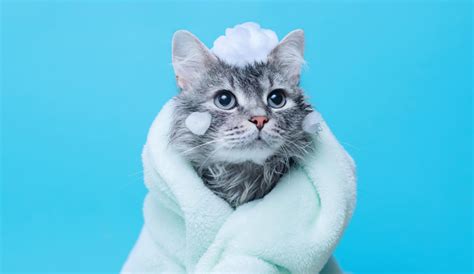Importance of Proper Grooming and Hygiene for Cats with Skin Conditions
Maintaining proper grooming and hygiene is crucial for the overall health and well-being of all cats, but it becomes even more essential for those with skin issues. Skin conditions can cause discomfort, itching, and even pain, leading to secondary infections if left untreated. Regular grooming and hygiene practices can help prevent these complications, promote healing, and improve the cat’s quality of life.

Types of Skin Issues in Cats
1. Allergies: Cats can develop allergies to various substances, including food, environmental allergens (e.g., pollen, dust mites), and contact irritants. These allergies cause skin inflammation, itching, and rashes.
2. Bacterial Infections: Bacteria, such as Staphylococcus or Pseudomonas, can infect the skin, leading to skin infections like folliculitis, pyoderma, and cellulitis. These infections can result in pustules, ulcers, scabs, and hair loss.
3. Yeast Infections: Yeast, namely Malassezia pachydermatis, can overgrow on the skin, causing skin inflammation, itching, and greasy or flaky skin.
4. Parasitic Infections: Parasites like fleas, mites, and ringworms can also cause skin issues in cats. These parasites bite or burrow into the skin, causing itching, inflammation, and hair loss.
5. Autoimmune Diseases: Autoimmune diseases, such as pemphigus foliaceus, can affect the skin, leading to blisters, crusts, and hair loss.
Grooming Techniques for Cats with Skin Issues
1. Bathing: Depending on the severity of the skin condition, your vet may recommend bathing your cat with medicated shampoos or conditioners. These products contain ingredients that help soothe the skin, reduce inflammation, and control infections.
2. Brushing: Daily brushing removes loose hair, dirt, and allergens from the skin. For cats with skin issues, use a soft brush that won’t irritate the skin. Regular brushing also helps distribute natural oils throughout the coat, which can soothe and protect the skin.
3. Ear Cleaning: Ear infections can accompany skin issues. Clean your cat’s ears regularly with a vet-approved ear cleaner. Avoid using cotton swabs, as they can damage the ear canal.
Hygiene Tips for Cats with Skin Issues
1. Keep the Environment Clean: Regularly clean your cat’s bedding, litter box, and surroundings to reduce exposure to allergens, bacteria, and parasites.
2. Nutrition: A healthy diet rich in omega-3 fatty acids and antioxidants can support skin health and reduce inflammation. Consult with your vet on a suitable diet for your cat’s condition.
3. Avoid Stress: Stress can aggravate skin issues. Provide a stress-free environment for your cat by avoiding loud noises, sudden movements, and other stressors.
Common Mistakes to Avoid
1. Over-bathing: Bathing too frequently can dry out the skin and worsen skin conditions. Only bathe your cat as often as directed by your vet.
2. Using Human Products: Do not use human shampoos or conditioners on your cat. They can contain harsh chemicals that can irritate the cat’s skin.
3. Neglecting Veterinary Care: If your cat has a skin condition, it’s essential to seek veterinary attention. Self-treating can delay proper diagnosis and treatment, potentially leading to more severe complications.
Case Detail: Allergies vs. Yeast Infection
Case 1: Allergies
- Symptoms: Itching, rash, excessive licking, hair loss
- Diagnosis: Allergen testing reveals sensitivity to food or environmental allergens
- Treatment: Avoidance of allergens, antihistamines, and topical corticosteroids
Case 2: Yeast Infection
- Symptoms: Greasy or flaky skin, inflammation, itching, ear infections
- Diagnosis: Skin cytology reveals yeast overgrowth
- Treatment: Medicated shampoos, antifungal medications, and ear cleaning
Conclusion
Proper grooming and hygiene are essential for cats with skin issues. By implementing these practices, pet owners can help alleviate discomfort, prevent complications, and improve their feline companions’ overall health and well-being. Remember to consult with your veterinarian for personalized advice and treatment plans tailored to your cat’s specific skin condition.





















